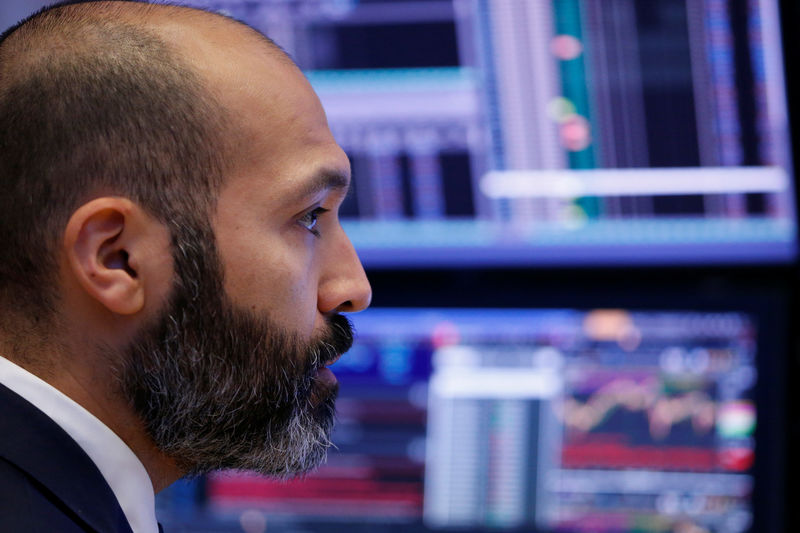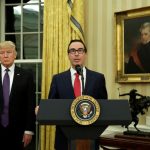
Oxford Lane Capital Corp. (OXLC) has announced its financial outcomes for the second fiscal quarter of 2025, with net asset value per share decreasing to $4.76 from $4.91 in the previous quarter. The company recorded GAAP total investment income of approximately $105.1 million, an increase from the prior quarter. GAAP net investment income stood at $67.2 million, or $0.22 per share, consistent per-share income compared to the previous quarter, while core net investment income was reported at $99.4 million, or $0.32 per share.
The firm experienced net unrealized depreciation on investments but also logged net realized gains. Notably, the weighted average yields on CLO debt and equity investments have decreased slightly. Oxford Lane Capital Corp. has declared monthly common stock distributions of $0.09 per share for the upcoming months.
Key Takeaways
- Net asset value per share decreased to $4.76.
- GAAP total investment income rose to approximately $105.1 million.
- GAAP net investment income remained steady at $0.22 per share.
- Core net investment income was approximately $99.4 million or $0.32 per share.
- Net unrealized depreciation on investments was recorded, alongside net realized gains.
- Decline in weighted average yields for both CLO debt and equity investments.
- Monthly common stock distributions set at $0.09 per share for the next quarter.
Company Outlook
- Oxford Lane Capital Corp. has a cautious outlook due to the slight decrease in net asset value and weighted average yields.
- The company plans to continue its opportunistic and unconstrained CLO investment strategy.
Bearish Highlights
- The net asset value per share has decreased from the prior quarter.
- There was a net unrealized depreciation on investments of approximately $52.5 million.
Bullish Highlights
- The company recorded an increase in GAAP total investment income.
- Net realized gains amounted to approximately $3.2 million.
- Oxford Lane Capital Corp. remains active, with significant new investments in CLO equity, debt, and warehouses.
Misses
- Core net investment income per share decreased from $0.41 in the previous quarter to $0.32.
Q&A Highlights
- The company’s investment strategy was mainly driven by primary market activity.
- Oxford Lane Capital Corp. sees continued attractive opportunities in both secondary and primary markets.
- The management does not anticipate a significant change in portfolio management despite changes in interest rates.
- The low default rate is not entirely reflective of the market due to out-of-court restructurings.
- Unrealized appreciation is influenced by a combination of GAAP accounting measures.
Oxford Lane Capital Corp.’s second fiscal quarter results reflect a mixed performance with both positive gains in investment income and challenges in net asset value and yields. The management’s strategy focuses on leveraging primary market activities and maintaining an opportunistic approach to CLO investments. Despite a slight decrease in net asset value and yields, the company remains active and continues to distribute monthly dividends to shareholders.
InvestingPro Insights
Oxford Lane Capital Corp.’s (OXLC) recent financial results can be further contextualized with real-time data from InvestingPro. The company’s market capitalization stands at $1.69 billion, reflecting its significant presence in the CLO investment space. OXLC’s P/E ratio of 5.37 suggests that the stock may be undervalued relative to its earnings, which aligns with the company’s steady GAAP net investment income reported in the latest quarter.
InvestingPro data shows that OXLC’s revenue for the last twelve months as of Q4 2024 was $306.79 million, with a notable revenue growth of 16.98% over the same period. This growth trend is consistent with the increase in GAAP total investment income mentioned in the quarterly report. The company’s profitability is further emphasized by its 100% gross profit margin, indicating efficient management of its investment portfolio.
Two key InvestingPro Tips are particularly relevant to OXLC’s current situation:
1. OXLC “Pays a significant dividend to shareholders,” which is supported by the impressive dividend yield of 20.53%. This aligns with the company’s announcement of continued monthly distributions of $0.09 per share.
2. The company “Has maintained dividend payments for 14 consecutive years,” demonstrating a long-term commitment to shareholder returns despite market fluctuations.
These insights from InvestingPro provide additional context to OXLC’s financial health and dividend strategy. Investors interested in a deeper analysis can access 4 more InvestingPro Tips for OXLC, offering a more comprehensive view of the company’s financial position and market performance.
Full transcript – Oxford Lane Capital Corp (OXLC) Q2 2025:
Operator: Hello everyone and welcome to Oxford Lane Capital Corp announcing the net asset value and selected financial results for the Second Fiscal Quarter. My name is Lydia and I’ll be your operator today. After the prepared remarks, there will be an opportunity to ask questions. [Operator Instructions] I’ll now hand you over to Jonathan Cohen, CEO, to begin. Please go ahead.
Jonathan Cohen: Thanks very much. Good morning everyone, and welcome to the Oxford Lane Capital Corp. second fiscal quarter 2025 earnings conference call. I’m joined today by Saul Rosenthal, our President; Bruce Rubin, our Chief Financial Officer; and Joe Kupka, our Managing Director. Bruce, could you please open our call with the disclosure regarding forward-looking statements?
Bruce Rubin: Sure, Jonathan. Today’s conference call is being recorded. An audio replay of the call will be available for 30 days. Replay information is included in our press release that was issued earlier this morning. Please note that this call is the property of Oxford Lane Capital Corp. Any unauthorized rebroadcast of this call in any form is strictly prohibited. At this point, please direct your attention to the customary disclosures in this morning’s press release regarding forward-looking information. Today’s conference call includes forward-looking statements and projections that reflect the company’s current views with respect to, among other things, future events and financial performance. We ask that you refer to our most recent filings with the SEC for important factors that could cause actual results to differ materially from those indicated in these projections. We do not undertake to update our forward-looking statements unless required to do so by law. During this call, we will use terms defined in the earnings release and also refer to non-GAAP measures. For definitions and reconciliations to GAAP, please refer to our earnings release posted on our website at www.oxfordlanecapital.com. With that, I’ll turn the presentation back over to Jonathan.
Jonathan Cohen: Thank you, Bruce. On September 30, 2024, our net asset value per share stood at $4.76 compared to a net asset value per share of $4.91 as of the prior quarter. For the quarter ended September, we recorded GAAP total investment income of approximately $105.1 million, representing an increase of approximately $15.4 million from the prior quarter. The quarter’s GAAP total investment income consisted of approximately $98.3 million from our CLO equity and CLO warehouse investments and approximately $6.8 million from our CLO debt investments and from other income. Oxford Lane recorded GAAP net investment income of approximately $67.2 million, or $0.22 per share for the quarter ended September compared to approximately $56 million, or $0.22 per share, for the quarter ended June 30. Our core net investment income was approximately $99.4 million, or $0.32 per share, for the quarter ended September, compared with approximately $107.2 million, or $0.41 per share, for the quarter ended June 30. For the quarter ended September, we recorded net unrealized depreciation on investments of approximately $52.5 million and net realized gains of approximately $3.2 million. We had a net increase in net assets resulting from operations of approximately $17.9 million or $0.06 per share, for the second fiscal quarter. As of September 30th the following metrics applied. We note that none of these metrics necessarily represented a total return to shareholders. The weighted average yield of our CLO debt investments at current cost was 17.3%, down from 17.4% as of June 30. The weighted average effective yield of our CLO equity investments at current cost was 16.5%, down from 16.8% as of June 30. The weighted average cash distribution yield of our CLO equity investments at current cost was 24.1%, down from 26.9% as of June 30. We note that the cash distribution yields calculated on our CLO equity investments are based on the cash distribution yields calculated on our CLO equity investments are based on the cash distributions we received or which we were entitled to receive at each respective period end. During the quarter ended September, we issued a total of approximately 48.1 million shares of our common stock pursuant to an aftermarket offering, resulting in net proceeds of approximately $252 million. During the quarter ended September, we made additional CLO investments of approximately $540 million and we received approximately $160.2 million from sales and from repayments. On October 24, our Board of Directors declared monthly common stock distributions of $0.09 per share for each of the months ending January, February and March of 2025. With that, I’ll turn the call over to our Managing Director, Joe Kupka.
Joe Kupka: Thanks, Jonathan. During The quarter ended September 30, 2024, U.S. loan market performance improved versus the prior quarter. The U.S. Loan Price Index increased from 96.59% as of June 30 to 96.71% as of September 30. The increase in U.S. loan prices led to an approximate 60 basis point increase in median U.S. CLO equity net asset values. Additionally, due to elevated levels of repricing activity, we observed median weighted average spreads across loan pools within CLO portfolios decrease to 352 basis points compared to 361 basis points last quarter. While the 12-month trailing default rate for the loan index decreased to 0.8% by principal amount at the end of the quarter from 0.9% at the end of June 2024, we note that out of court restructurings, exchanges and subpar buybacks which are not captured in this cited default rate remain elevated. U.S. new issuance during the quarter totaled approximately $40 billion, a decrease of $20 billion from the prior quarter. CLO new issuance year-to-date has totaled approximately $142 billion as of September 30, compared to approximately $82 billion at this point in 2023. The U.S. CLO market has seen over $200 billion in reset and refinancing activity year-to-date, including approximately $33 billion in the month of August, marking the second highest monthly volume of all time. Oxford Lane remained active this quarter investing over $500 million of proceeds in CLO equity debt and warehouses while participating in opportunistic resets and refinancings. As a function of our overall activity during the quarter, we were able to lengthen the weighted average reinvestment period of Oxford Lane’s equity portfolio from November 2026 to September 2027. Our primary investment strategy during the quarter was to engage in relative value trading and seek to lengthen the weighted average reinvestment period of Oxford Lane’s CLO equity portfolio. In the current market environment, we intend to continue to utilize our opportunistic and unconstrained CLO investment strategy across U.S. CLO equity debt and warehouses as we look to maximize our long-term total return. And as a permanent capital vehicle, we’ve historically been able to take a longer term view towards our investment strategy. With that, I’ll turn the call back over to Jonathan.
Jonathan Cohen: Joe thanks very much. That concludes our presentation. We’re happy operator to open the call up for any questions.
Operator: Thank you. [Operator Instructions] Our first question comes from Erik Zwick with Lucid (NASDAQ:LCID) Capital. Please go ahead. Your line is open.
Erik Zwick: Thank you. Good morning, Jonathan and Joe.
Jonathan Cohen: Good morning.
Joe Kupka: Good morning.
Erik Zwick: You were very active.
Jonathan Cohen: Yes, thanks.
Erik Zwick: You were very active in the quarter in terms of both new investments and sales and repayments and Joe in his comments I think mentioned just how active the CLO market was during the most recent quarter. I’m curious if you could just provide a little commentary first in terms of your new investments, you know what the split was between kind of primary market purchase versus secondary and just how you at present kind of weigh the attractiveness of those two potential sources of new investments going forward from kind of a risk reward perspective?
Joe Kupka: Sure. First, about the split. So it was mainly driven by primary activity. We’ve seen the arbitrage continue to improve in the primary and we took advantage of that. So we invested about $180 million in warehouse investments and about $270 in primary. So some of that, especially what you see in the sales and repayments were these warehouses being converted into primary CLO investments. And apart from that, we also were active in the secondary, investing about $90 million in the secondary. As far as going forward, I think we continue to see attractive opportunities in both the secondary and the primary, especially opening up new warehouses with top tier managers who can command the tightest liability spreads and secondary investments kind of across the tenor and manager spectrum, we continue to find good value.
Erik Zwick: Thanks, Joe, that’s really helpful. And then just thinking about the interest rate environment, I think that the market’s pretty set on that there will be additional Fed funds target rate cuts. I guess kind of the magnitude and timing is still out for debate. But in terms of looking at a lower short term interest rate environment, how do you expect that to impact your portfolio as well as maybe potentially change how you manage it going forward?
Jonathan Cohen: Sure. I don’t think there’s likely, Erik, to be any meaningful change in how we manage the portfolio. We’ve been managing it pretty consistently since the inception of the fund in 2011. But in terms of the near-term issues associated with a diminishment in interest rates, with change in base rates, our sense is that the most meaningful implication of that is likely to be a reduction in the risk associated with U.S. syndicated loan default rates by virtue of diminishing the risk associated with refinancing possibilities. So from our perspective, there are lots and lots of other smaller implications, but that’s probably the principal one.
Erik Zwick: That’s a good point and then actually leads into another question I wanted to ask about. You mentioned that the default rate is incredibly low now, but it’s not reflective of out-of-court restructurings. Just curious why you guys think maybe more of some of these credits or loans that are being stressed or tripping covenants are going to an out-of-court resolution rather than to the courts, if you have any thoughts there? Yes, so I think that’s a relatively recent phenomenon. I think that kind of flipped recently in the past year or two. Before it was more payment defaults, now it’s more of these out-of-court restructurings. I would say it’s. I mean, there are a lot of factors. I think one of them is the companies kind of see rate cuts coming. They want to try to kick the can down the road a little more, try to stave off payment default, and this is a way to do it. So I think that’s one factor. But I think there’s a lot of interplay with lender, you know, consortiums.
Jonathan Cohen: Right, exactly right, Erik. But at the same time, it’s something that we’re very aware of in the context of managing this portfolio.
Erik Zwick: Makes sense. And then, last one from me, if you could just talk maybe about some of the factors that drove the unrealized appreciation of $52.5 million during the quarter?
Jonathan Cohen: Yeah, sure, sure. So it’s an interplay of a lot of GAAP accounting measures. So, you know, it takes into account the fair, so even though we had a positive quarter, it takes into account the fair value reduction offset by the current cash flows of the CLO and then the gap decrease of current cost. So it’s really a GAAP accounting measure.
Erik Zwick: Excellent. Thanks for taking my question.
Jonathan Cohen: And we’re happy, Erik. It’s a pleasure and in terms of the vagaries of GAAP accounting supplied to this line item, we’re more than happy to go through it in more depth with you offline if you’d like.
Erik Zwick: Sure, that’d be great, thanks.
Jonathan Cohen: All right. Thank you, Erik. Any other questions operator? I show no further questions. So, Jonathan, I’ll turn the call back over to you.
Jonathan Cohen: All right. Thank you very much. We’d like to thank everybody for their interest and their participation on this call. Thank you and we look forward to speaking to you again soon. Thanks very much.
Operator: Thank you. This concludes our call today. Thank you very much for your participation. You may now disconnect your line.
This article was generated with the support of AI and reviewed by an editor. For more information see our T&C.






